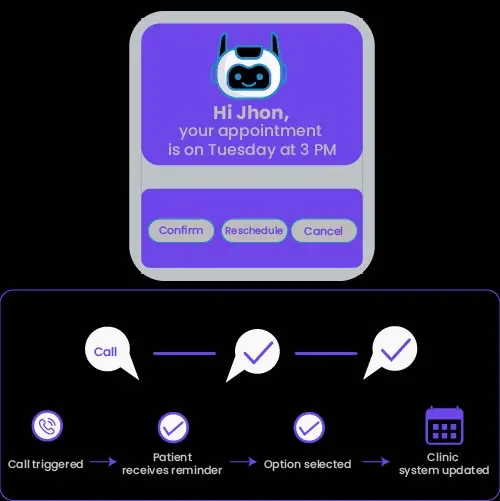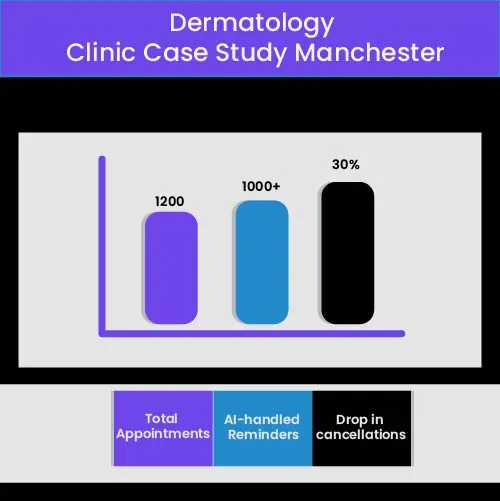Patient no-shows are one of the most vexatious and expensive problems that healthcare clinics deal with today in a world that continually changes. Missing appointments do not only result in the loss of income but also cause chaos in the working of the clinic, spending unnecessary time, and also postponing the care of others. No-show percentages in studies have indicated they vary between 5 and 30 percent depending on the nature of the practice. Nevertheless, the introduction of AI voice assistants is helping clinics discover a new and highly efficient method for addressing this challenge directly.
So, how do AI voice assistants revolutionise the way of engaging patients, and how can they help make clinics reduce the no-show rates significantly?
The Missed Appointments Cost
It is necessary to cognise the severity of the problem before wading into its solution. Each missed appointment is a lost revenue and, at the same time, a lost opportunity to take care of patients. When a patient fails to turn up, the time of the staff and medical resources and the efforts needed to coordinate the schedule are all useless.
The common ways of carrying out appointment reminders, such as SMS or sending manual calls may not be enough. One can skip reading the texts and human staff is overburdened by administrative affairs. Here is the role of AI voice assistants that come to change the game.

What are AI voice assistants?
The voice assistants of AI are the complex software systems that utilise natural language processing (NLP) and machine learning to be able to talk to the patients over the phone in a human-like manner. Most of them can be envisioned as intelligent virtual receptionists that can call patients, remind them about their future visits, and even have a full-fledged two-way real-time conversation.
Unlike the generic robocalls, these AI assistants can not only accept responses, reschedule meetings, answer simple questions, and make notes about patient preferences; all this is also possible without involving the human factor.
The Way AI Voice Assistants Decrease the No-Show Rates
1. Personalised and on-time reminders
The AI voice assistants provide personalised appointment reminders at convenient points in time, that is, 24-48 hours before the appointment. These calls contain the name of a patient, the time of appointment, the name of a doctor, and the way towards the clinic. Turning reminders into something more personal and appropriate in time, patients have much better chances of remembering and showing up to the appointment.
2. Two-Way Conversational Play
The voice of AI assistants is the primary difference of using natural conversations. Suppose the patient picks up the phone and says, I have to reschedule., The assistant can do that, can take another appointment, and tell the patient that he or she is to come again within the second. This live communication helps these clinics to organise a full schedule without involving the staff persons to do so.
3. round-the-clock availability
Unlike human personnel, AI voice assistants don’t follow a 9-5 schedule—they remain available around the clock. This means they can send reminders when patients are most likely to receive them, even after office hours. This mobility raises the possibility that patients will participate and diminishes the likelihood of lost messages or communications.
4. Multicultural and Diversity Communication
Most AI voice systems have the capacity to use different languages and hence are available to patients of diverse backgrounds. This inclusivity guarantees that the language barrier will not turn into one of the sources of misunderstanding and skipped visits.
5. Feedback and Confirmations of Patients
AI voice systems are able to record occasions when a patient confirms or rejects an appointment. Clinics use this live information to act quickly, replace empty appointment slots, and prevent unforeseen last-minute cancellations.

Real-World Impact
Finally, the equipped clinics report positive results already, and it is possible to quantify their success. It has been reported that the no-show rate is reduced by up to 40%-50%, and it has also been found that the administrative process has increased a lot. The employees will have time to accomplish work on a higher level, and more time may be devoted to in-clinic care as they will not have to spend several hours on the phone.
It would be a middle-sized dermatology clinic located in Manchester with an AI assistant that keeps the appointment reminders. In just three months, they reduced their no-show rate from 18 percent to 8 percent. The assistant also rescheduled most appointments independently, handling 85 percent of the total rescheduling requests without staff involvement. It was a large increase in productivity.
The AI prospect of patient engagement
Voice assistants provide evidence that they may become a lot more advanced once the AI nectar gets more advanced. There may also be future developments that include connection to electronic health records (EHR), health check-in calling ahead, and even medication notification messaging, which further enhances patient care and clinic performance.
Final Thoughts
Voice assistants, AI-enabled tools, are more than a simple digital utility but a strategic tool in the battle against patient no-shows. They are able to relate to their patient by giving them personalised, proactive, and smart communication that saves the clinics time and money, as well as increases the overall patient experience.
Living in a time when the healthcare needs continue to increase exponentially, such smart solutions as AI voice assistants could be exactly what clinics need to be able to grow the fullness of their schedules, optimise their work, and increase patient health in general.



Leave A Comment